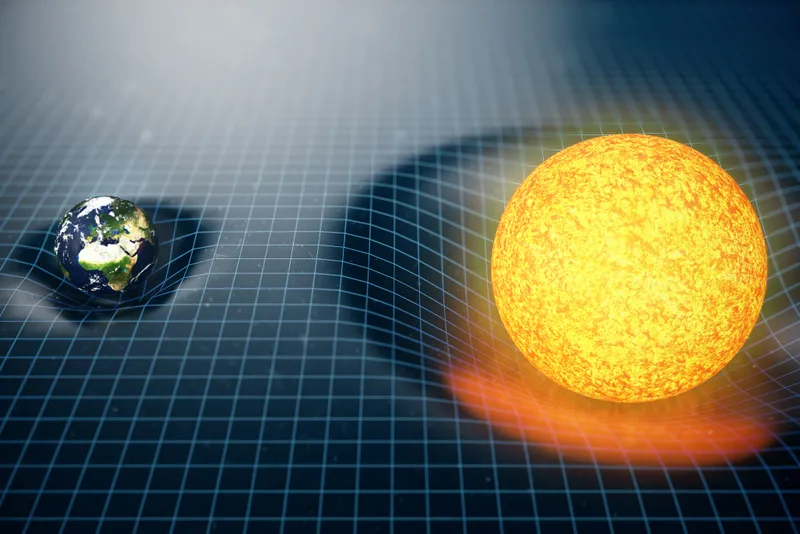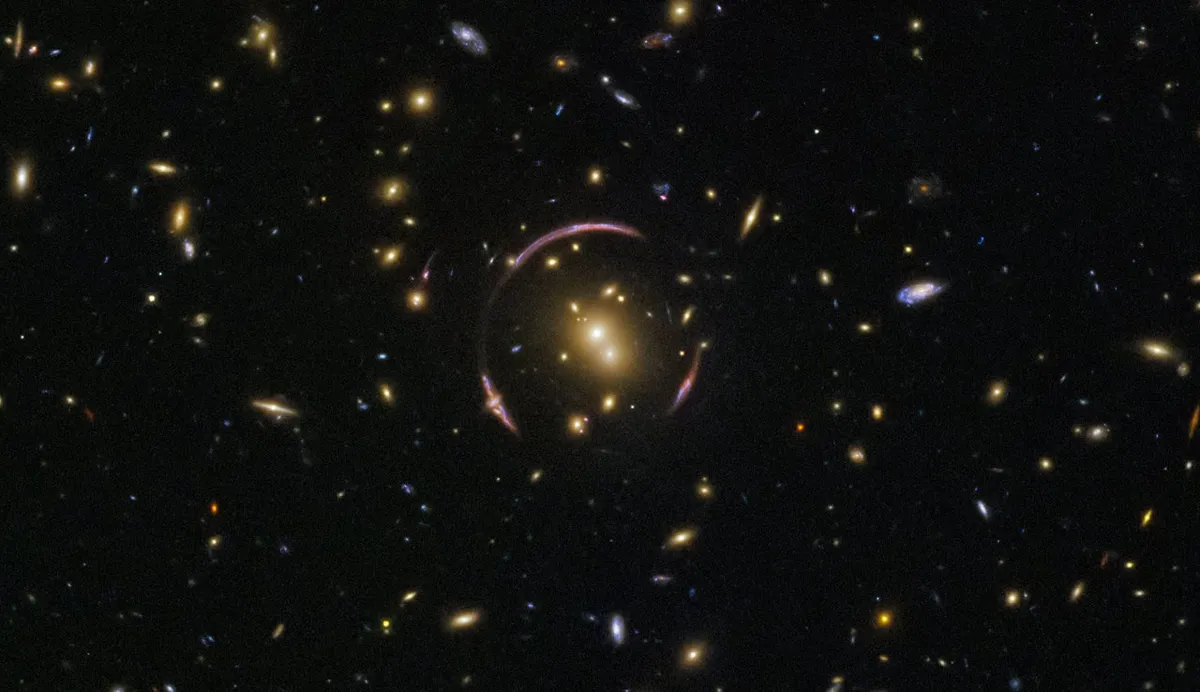You may have heard the seemingly far-out notion that gravity bends light, space and time, and wondered whether this was mere science fiction.
To determine whether this statement is actually true, we need to determine whether gravity, as most of us understand it, truly exists.
At school we are told that gravity is an attractive force. That the Moon orbits around the Earth because our planet pulls on it.
This, after all, is how Isaac Newton described gravity.
However, we've had a more complete picture of gravity for over a century: Einstein's General Theory of Relativity.
There are some key differences between Newton gravity and Einstein gravity, as a result.

Gravity and General Relativity
General Relativity describes how mass distorts the fabric of the universe, a fabric known as spacetime.
Picture this by imagining a bedsheet held tightly at the four corners, with a bowling ball placed in the centre to represent the Earth.
The sheet will sag in the middle. You could then take a tennis ball and roll it around the rim of the dip in the sheet.
In other words, you could make the tennis ball orbit the bowling ball. Crucially, though, there's no force of attraction here.
The bowling ball isn't pulling on the tennis ball. Instead the bowling ball is distorting the shape of the fabric and the tennis ball is simply following that distortion.
So the attractive 'force' of gravity is actually an illusion. Gravity is mere geometry.

Gravity vs light
The fact that massive objects distort spacetime also affects light. The proper name for the depression in spacetime is a 'gravity well'.
When light encounters a gravity well, it too follows the local curvature, which bends the light onto a new path.
This can lead to an effect known as gravitational lensing.
Imagine light from a distant galaxy encountering the gravity well of a massive cluster of galaxies en route to our telescopes.
The distant galaxy's light is bent by this encounter, exactly as it is in a lens. It has the same effect, too, magnifying the distant galaxy's light.
If the Earth, foreground object and background object are perfectly aligned then the bent light creates a perfect circle known as an Einstein ring.

Gravity vs time and space
As gravity wells are distortions in spacetime, they also distort time as well as space.
Picture a rather peculiar kind of clock. It is made of two mirrors with light bouncing between them.
Every time the light hits a mirror the clock ticks.
If you take this clock into a gravity well then the spacetime between the mirrors will be distorted and it will take longer for the light to travel between the mirrors.
In other words, the clock will tick less frequently. Time runs more slowly the deeper inside a gravity well you are.

For the majority of your life, your feet are below you head. Said another way, your feet are often deeper inside Earth's gravity well than your head.
Time runs more slowly at your ankles than your eyes, meaning your face is ever so slightly older than your feet.
The same effect would allow you to use the deepest gravity wells – those belonging to supermassive black holes – to time travel into Earth's future.
Hang out there for what seems to you like ten years and by the time you return home, thousands of years will have elapsed.
